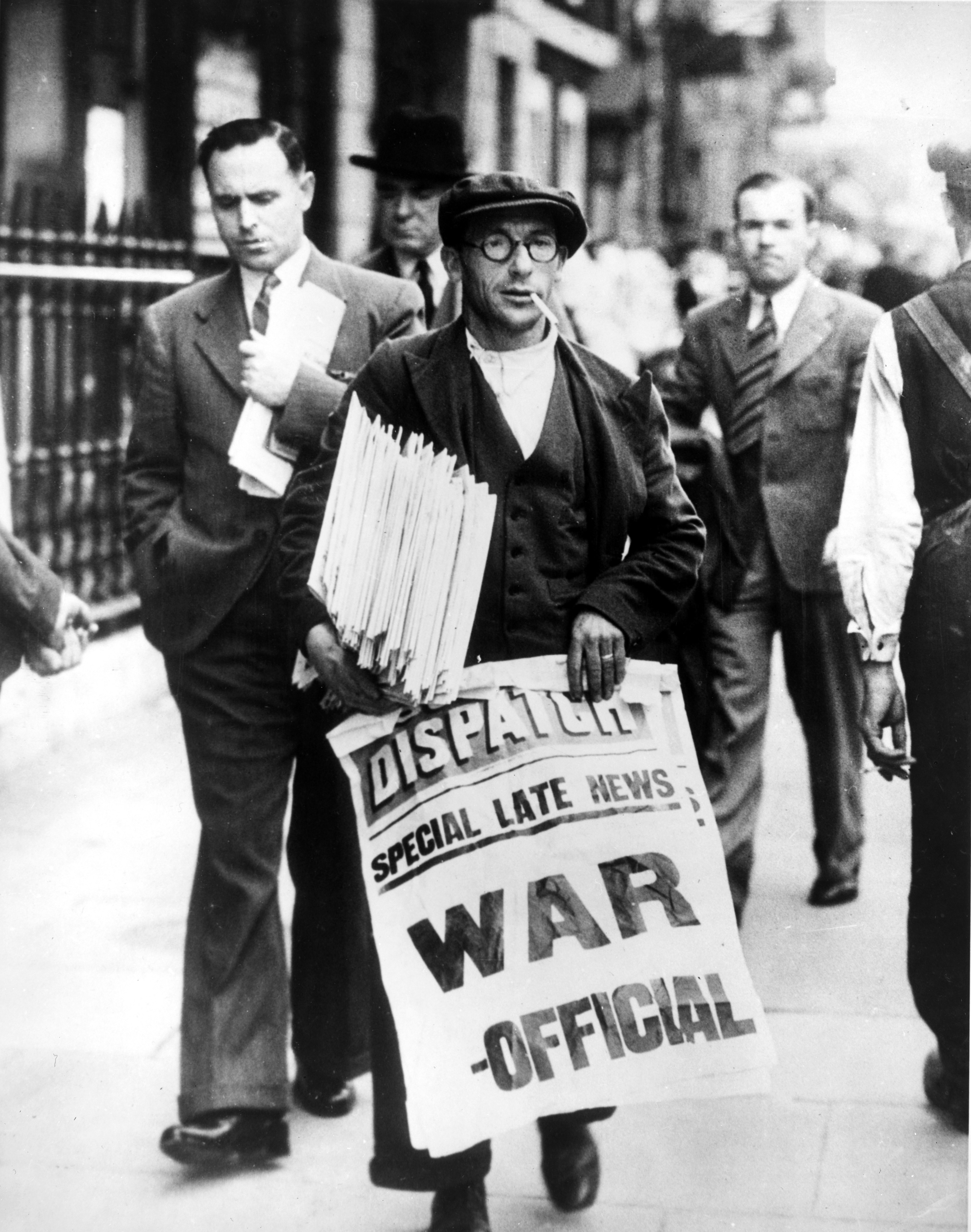Eighty Years Ago: The Summer of ’39
Added about 6 years ago by David Lowther
 GUEST BLOG: Eighty years ago, in the summer of 1939, Britain stood on the verge of war for the second time in a quarter of a century. The IRA was working with the Nazis to spread chaos. Novelist David Lowther explains how this sets the scene for The Summer of ’39.
GUEST BLOG: Eighty years ago, in the summer of 1939, Britain stood on the verge of war for the second time in a quarter of a century. The IRA was working with the Nazis to spread chaos. Novelist David Lowther explains how this sets the scene for The Summer of ’39.
The best efforts of Prime Minister Neville Chamberlain to appease the German dictator Adolf Hitler had come to nought despite his very best efforts. Germany had already seized Austria (March 1938), the western part of Czechoslovakia (October 1938) and the rest of that country (March 1939), in direct contravention to the deal that Hitler had struck at Munich with Chamberlain and others the previous autumn, and was now turning his attention to Poland.
The UK Parliament had already guaranteed Poland’s borders so any attack by Germany on their eastern neighbours was bound to pull Britain and France into war. The last months before the outbreak were dominated by preparations for the conflict. In Britain there was already a military campaign of sorts taking place. Dissident terrorists from the Irish Free State, desperate to see a united Ireland, had been carrying out a bombing campaign on the UK mainland since the turn of the year. So far nobody had been killed but there had been significant damage and disruption. At the same time, many Germans living in Britain were engaged in espionage activities. Organised by the German secret service, the Abwehr, these activities soon came under the control of the Gestapo, whose agents were already active in the guise of journalists and businessmen.
Soon the two halves of this conspiracy came together and the Irish terrorists (IRA) struck a deal with the Germans, who provided them with weapons, explosives and safe houses. At the same time, anti-Nazi Germans (mostly Jewish refugees living in the UK) were coming under pressure from the Gestapo to spy on their employers. Many of these fugitives (mostly girls) had relatives still living in Germany and the Gestapo threatened these defenceless people if their British-based relatives didn’t co-operate with them.
This, then, is the background to my novel The Summer of ’39. It is a work of fiction, with heroes, villains, traitors and patriots. Young love too plays a part in the story. The central characters are Roger Martin and his girlfriend Jane (both of whom appeared in my earlier novel The Blue Pencil), a senior Irish terrorist, a small number of Gestapo agents whose work is directed from the German embassy in London’s Carlton House Terrace by a senior SS officer, and two teenage boys from London’s East End who help Roger keep track of the bad guys. A desperate Jewish girl refugee, her parents marooned in Berlin, a senior Foreign Office diplomat, a Special Branch detective and Roger’s close friend Richard Walker more or less complete the cast of fictional characters but the narrative is strengthened by the inclusion of some real-life people including legendary investigative journalist Claud Cockburn (later a significant contributor to Private Eye), MI5 spy Klop Ustinov (father of Sir Peter) and Seamus O’Donovan (IRA senior operative in Britain).
The action—and there’s plenty of it—takes place in west and central London, Woolwich, Coventry, Harwich, on the London Underground network and in Berlin and Hanover. The tale closes with two climactic set pieces on either side of the North Sea, one of which involves London Films, whose founder Sir Alexander Korda was a Hungarian who had settled in Britain. So grateful was he for the opportunities his new country gave him, he allowed his European offices to be used by members of MI6. London Films Rotterdam office plays an important role in The Summer of ’39.
Graham Greene would probably have called The Summer of ’39 “an entertainment”. With its intoxicating mixture of espionage, action, romance, good guys and bad guys, threats and blackmail and the approach of war, it seems that this would be an apt description. Of course, few of these things actually happened eighty years ago but, in writing the novel, I created a background in which they could conceivably could have happened. It’s my favourite of my three fiction titles that have been published by Sacristy Press.
David Lowther is the author of four titles with Sacristy Press—read more about him and his books here.
The Summer of ’39 is a tale of spies, terrorists and blossoming young love—an epic adventure set eighty years ago in the final months of peace before World War II. Get your copy here.
Please note: Sacristy Press does not necessarily share or endorse the views of the guest contributors to this blog.
